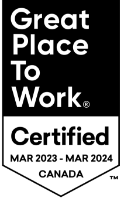
Article
What Have Leaders Learned from the Pandemic?
David Kincaid, Michael Carter, Ian Madell — March 9, 2022
With cautious optimism, the world is starting to look to a post-COVID time and as they do, they are also starting to parse and reflect on how, as a result of the experience, their businesses, teams and own perspectives have changed. Perhaps forever.
At Level5, we’ve been doing that with our business as well. For our team, these past two years have been a time of explosive growth and the chance to work alongside our clients during a period of unprecedented transformation. We were also forced into different collaboration and delivery models, all of which required new skills and behaviour to make it work.
Shifting to a “new normal” brings with it questions on what can and should be retained and in what form. One CEO recently shared with us that, “COVID-19 forced our team to find new ways of engaging with our customers and connecting with each other and partners. And what we’ve realized is that many of these new methods are better than the practices we previously had in place. As life shifts back, we don’t want to lose these gains and are trying to figure how to navigate forward – so we don’t.”
From our experience working with clients across organizational size and sectors, we’ve noticed five components that are essential for organizations to effectively undertake this strategic reflection initiative – and then how successful they are in applying and institutionalizing the insights.
Prioritize Risk/Reward Assessment
The pace and impact of COVID resulted in condensed and hot-house levels of internal business innovations and experimentation. It also permanently changed customer and client expectations.
To gain competitive insights requires leadership teams to implement an efficient and effective way to intentionally process the change and pull out these insights.
As a result, one of the most important choices that a leadership team can make is prioritizing an internal and external audit. This should be designed to help teams and stakeholders most effectively reflect back on their experiences and then in turn, really understand how to apply those insights to the risk and reward choices the business makes moving forward.
Orient Around the Brand Promise
One finding we are hearing across industries, business sizes and verticals is that as organizations have gone through this dramatic amount of change, they’ve also gained a new appreciation for the role of brand in the business and with their customers.
“It’s really the North Star of the business.” says David Kincaid, “and what organizations are re-appreciating is that, in times of market and global turbulence, it’s strong brands that are best equipped to deliver for customers and employees in uncharted territory.”
“When decisions are being made quickly, assessing choices through the lens of your brand promise prevents decisions that take the business off course. Many of the CEOs we have worked with over the last couple of years have come to realize a brand lens provides natural parameters which mitigate risk.”
“When decisions are being made quickly, assessing choices through the lens of your brand promise prevents decisions that take the business off course.”
Cultivate Agility
The concentrated and intense business transformation that navigating COVID required both uncovered and forced new levels of agility within organizations. Cross-functional teams made decisions faster, strategies were pivoted, and multiple scenarios simultaneously explored. Along the way, constructs and processes that were previously considered entrenched were upended. The majority of businesses’ success in the past two years has been driven by unprecedented levels of agility and it’s become the competitive edge that all organizations want to continue.
“Businesses are coming to us looking for how they can foster and capture more innovation and agility.” adds Ian. “And at the same time, they are looking at how to strategically plan, when internal and external pressures are changing so quickly.”
“One of the most direct and tactically applicable examples of this that we are seeing is the rolling strategic plan, meaning organizations are now reviewing their five-year plans on an annual basis or in some cases every six months, in order to adapt it to rapidly changing conditions. This has proven to be particularly true for our clients in retail and CPG where supply chain challenges have wreaked havoc on effective planning horizons. It’s a much more flexible, practical and responsive approach.”
Communicate & Engage
By necessity, COVID pushed leadership teams to communicate more frequently and with more vulnerability and empathy. At the same time, increased communications helped employees become more engaged in finding organizational solutions to challenges and working more collaboratively. And the results were overwhelmingly impactful. Employees were more engaged, adaptable and reported increased levels of purpose. As businesses shift into the reentry and recovery phase, this is something that across the board, employees and leadership teams are actively looking to continue.
“Across sectors, leadership teams we work with have overwhelmingly shared how a real priority for them is continuing to make the time and space to have difficult conversations directly and with empathy. And to continue making the leadership teams available for more personal and present communications.” reflects Michael. “You want to maintain and build this level of trust and purpose, since it’s the foundation of a team that can successfully pivot and adapt in the face of change and that has internal security to bring the innovations and provocative ideas to the table.”
Build For Change
Whether a business struggled or was widely successful during COVID, positioning for 2022 has to come from the mindset that change is the chance for opportunity. Yes, it’s scary for individuals, business leaders and the organization overall, but it’s likely that the current pace of change will never be slower than it is today. This is the new normal, and recruitment needs to reflect this. As one client, the current CEO of a crown corporation stated, “it’s essential to intentionally recruit people comfortable with change and uncertainty and then create an internal culture which fosters their ability to find and capitalize on the opportunities in flux.” Like our clients, we are also increasingly looking at how to adjust our recruiting criteria to increase the value that we place on experiences that speak to these abilities.
As the first quarter of the year comes to a close, we are enthusiastic and optimistic about the incredible growth opportunities ahead. The pent-up demand for goods and experiences, the opening up and unleashing of customers and the ability to call on new innovations in business and for businesses to be able to meet them have us enthusiastic about what’s ahead.




